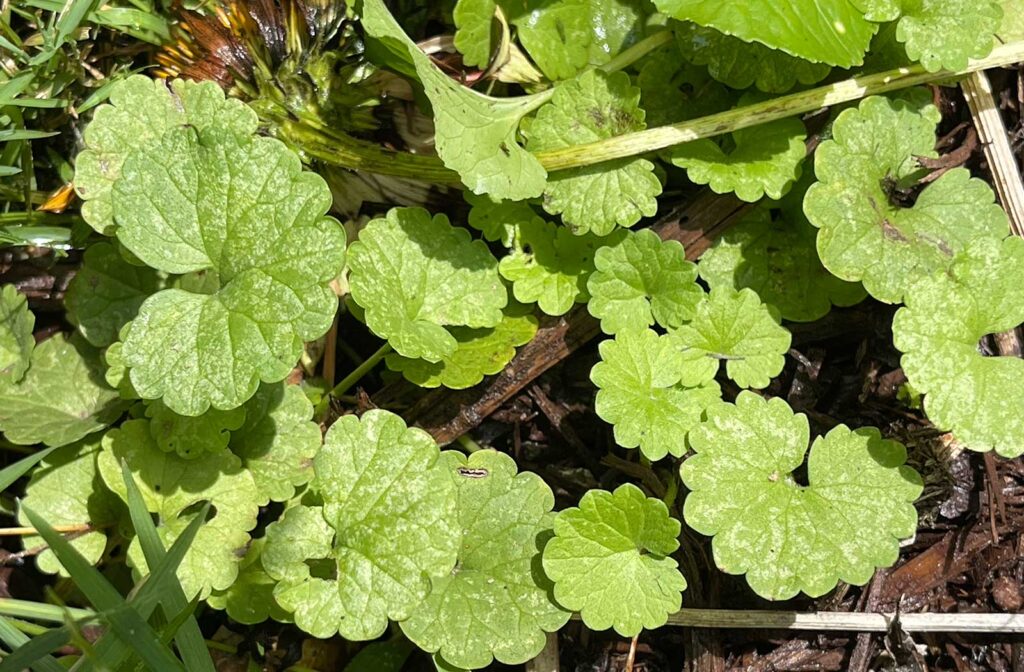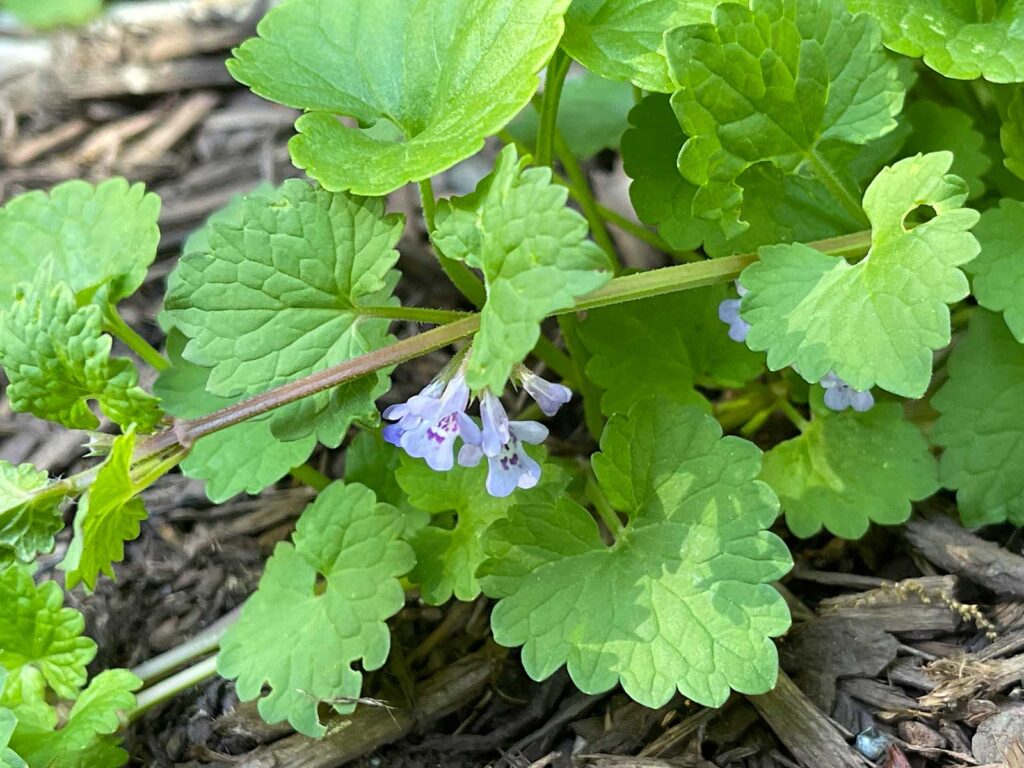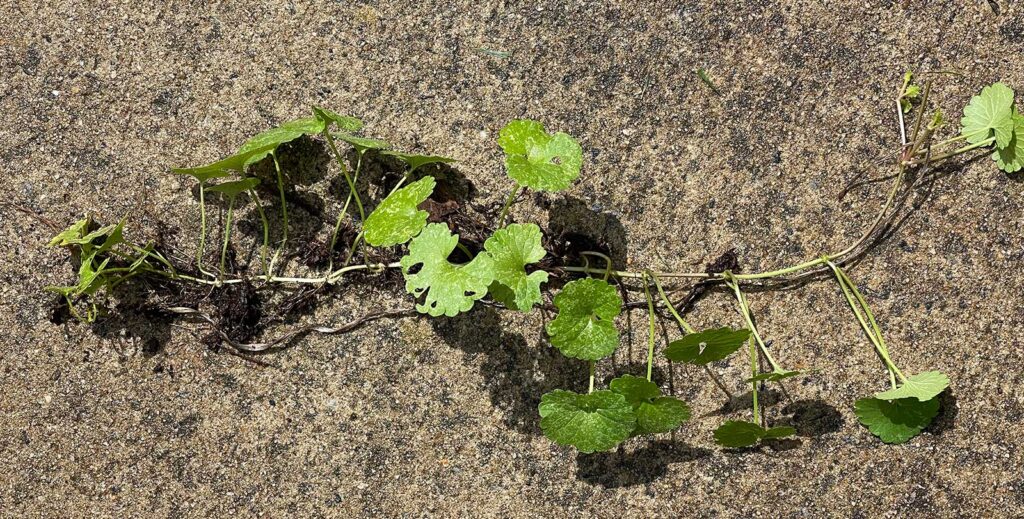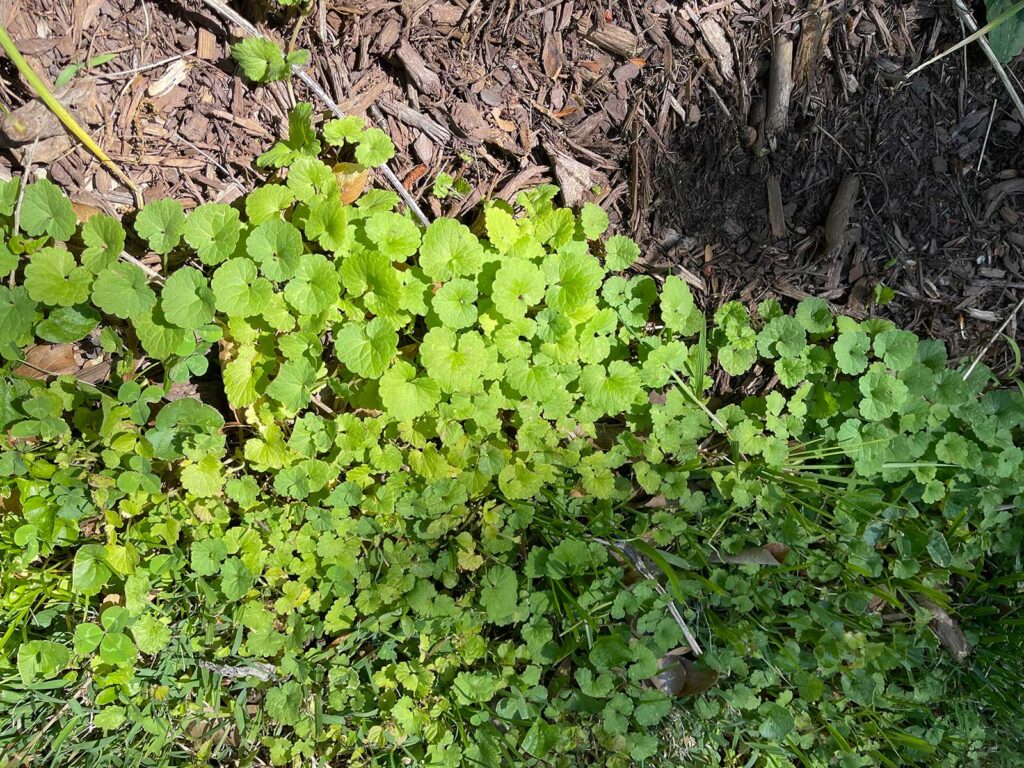You might find this low-growing plant with scalloped leaves creeping along the ground under tall trees where the soil is often moist. While its pale purple flowers of creeping Charlie (Glechoma hederacea) are cute, the quick growth of this plant is definitely not.

Where is creeping Charlie from?
Originally brought from Great Britain, Ireland, and smaller surrounding islands to serve as an attractive groundcover, creeping Charlie is now considered an invasive plant.
Not only can creeping Charlie outcompete lawn grasses in growth rate, but it also produces a chemical that inhibits the growth of other plants adjacent to it. This is known as allelopathy, which is also found in black walnut, sumac, and forsythia.
What does creeping Charlie look like?
The leaves of creeping Charlie are round or heart-shaped and have a scalloped edge (like a seashell). The leaves are arranged oppositely on the stem of the plant. The plant grows laterally across the top of the soil, with the roots extending from the connection of a leaf to the stem. The stem of the plant is square. If you crush the leaves of the plant, you’ll catch a whiff of mint. It is in the mint family. In spring, you’ll find tiny pale purple flowers along the plant.

How does creeping Charlie spread?
Creeping Charlie, also known as ground ivy, spreads by both seeds and creeping stems, called stolons (people often refer to them as ‘runners’). Through rapid growth, these runners can colonize large portions of your lawn or bare ground.
Personally, I find it quite satisfying to start pulling one of the long runners and have the string of the plant slowly lift from the ground in long lengths. That doesn’t mean I want this weed in my yard, but it’s better than pulling some of the other weeds we have growing in our yard.

How do I get rid of creeping Charlie?
While there are chemical treatments for creeping Charlie, I won’t be discussing those here. I prefer to use more natural methods in my garden whenever possible.
Option 1: Improve the condition of your soil.
By doing this and combining it with option 2 below, you allow more desirable plants to colonize the bare soil, allowing them to outcompete creeping Charlie.
Option 2: Manually remove the Creeping Charlie
While this is a challenging process, it can be successful, particularly in cases where the spread of creeping Charlie has been minimal. For larger areas, it requires consistent manual removal over a period of time.
If you want to pull creeping Charlie manually, it’s more effective to do it when the soil is wet. Soak the area with the hose 45 to 60 minutes prior to weeding. This will make it less likely that the runners will break as you lift them from the soil. I often take to weeding our lawn of this plant just after heavy rain.
Lift the plant carefully, trying to get the full length of the runner. Any leaves left behind will regrow. That’s why you must continually check the area and regularly weed it until all the plant has been removed.
Do not put this plant in your compost. If the compost doesn’t get hot enough, you’ll spread the plant in the future.
Option 3: Solarization to kill the creeping Charlie
This method works best in areas with direct sunlight. In shady conditions, it may work, but it will take months to potentially a year for good results.
Use clear plastic or translucent plastic, not black plastic. The clear plastic allows the sun to penetrate and then traps the heat, basically cooking the weeds. Anything between 2 to 6 mils should work.
Wet the soil before placing the plastic on top. Then tack the plastic down using sod staples or bury the edges to reduce the potential for rain to get underneath.
In hot, dry summer months, this can take just a few weeks. In shade or wetter conditions, it can take longer.

Landscape value of creeping Charlie
If you plant this in a contained area, it does make a nice ground cover. It is perennial and will come back each year. So, if you have a shaded area where you have trouble growing much else and you already have this weed growing in your yard, it’s something to think about. Just don’t let it escape to anywhere else.
Wildlife value of creeping Charlie
In the spring, when it is in bloom, several different bee species feed on the nectar. However, the pollen of this plant is of no value to bees.
